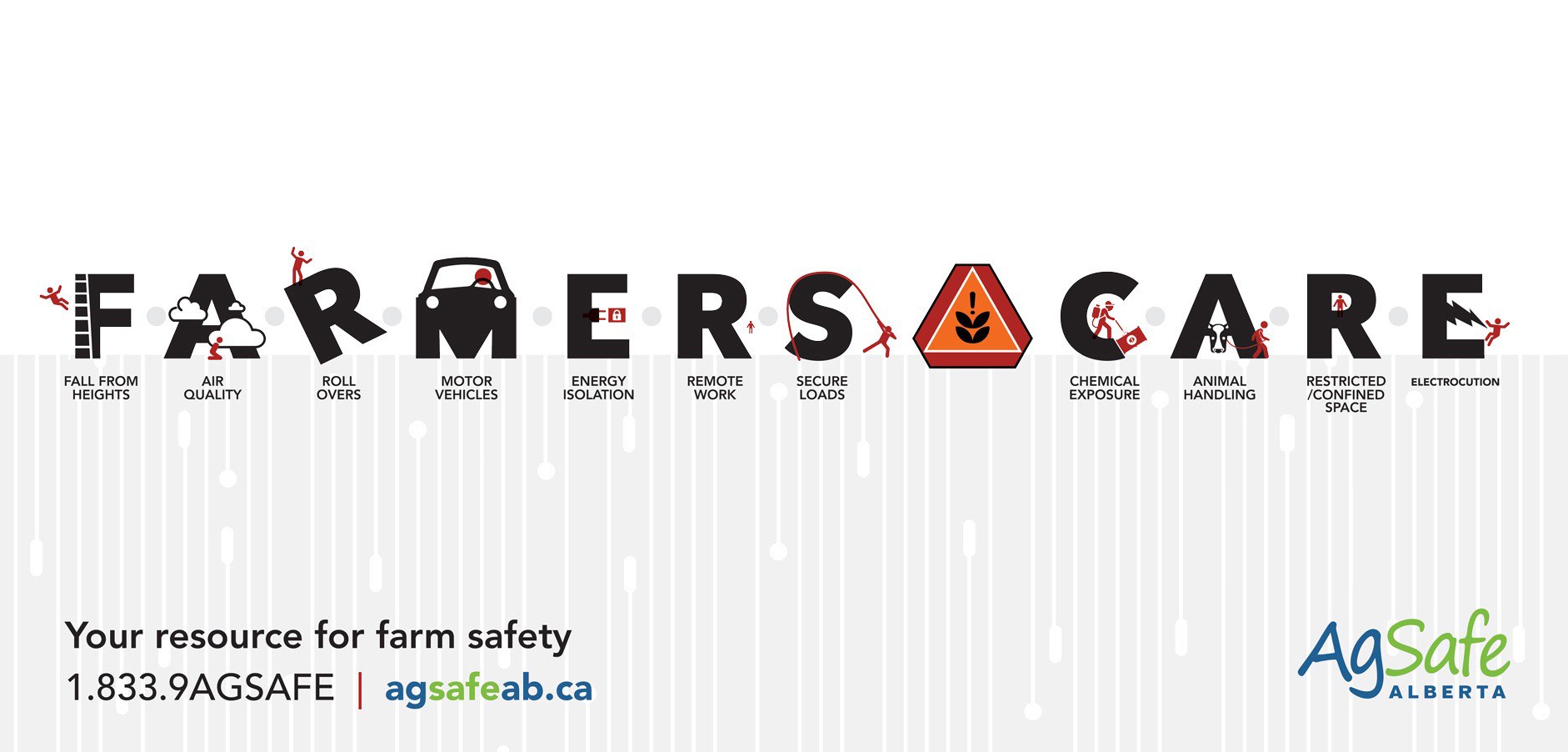Farming can be a risky business. Over the years, threats posed by weather, global markets, and regulations have led to the development of a number of tools to help farmers manage these risks.
However, there are other risks lurking on farms in Alberta: hazards posed by farm equipment, livestock, long hours and more.
“Safety is just one more piece of that risk management puzzle,” explained Jody Wacowich, executive director of AgSafe Alberta. “I like to encourage farmers and ranchers to think of it that way, rather than as a safety program. It’s about managing the risk.”
And that’s where AgSafe Alberta comes in—a not-for-profit organization that helps farms and ranches manage risk as it relates to on-farm safety. Producers can access a variety of tools and resources through AgSafe Alberta, including guides on hazard management, a farm safety planning workbook, Occupational Health & Safety documents and more. Representatives of AgSafe Alberta can help producers develop their safety plan, identify hazards on their operation and be present during OH&S investigations or inspections.
“Ag Safe is here to help (farmers and ranchers),” explained Wacowich. “We want to make it as practical as possible for your farm and we want to make (your safety plan) something you can use on the farm.
“We don’t want you to create a safety plan and then have it sitting in a binder on a shelf collecting dust, because that doesn’t benefit you or the people who are working on your farm.”
AgSafe Alberta’s roots can be traced back to the 2016 introduction of Bill 6: The Enhanced Protection for Farm and Ranch Workers. Alberta’s commodity groups came together as a formal response to Bill 6 and created the AgCoalition to “advocate with one voice on behalf of Alberta’s commodity groups.” Founded in 2018, AgSafe Alberta is one of the outcomes of the AgCoalition.
AgSafe Alberta helps farms and ranches meet the current requirements of the Alberta Occupational Health and Safety Act, Regulation and Code, and understand what is required of them. In Alberta, the Occupational Health & Safety Act requires any farm or ranch that has an employee or worker to have some form of safety program in place.
“It does exempt family farms,” said Wacowich. “I don’t think that means family farms should be ignoring safety. If we look at the statistics, the majority of the fatalities happen on our family farms.”
Farmers Care
Recently, AgSafe Alberta launched the Take 11 Challenge to help remind everyone in the agriculture industry to take 11 seconds and think about minimizing risk and making things safer.
“A lot of other safety industries have lifesaving rules,” said Wacowich, adding that there was a feeling that lifesaving rules might not be the right fit for the ag industry. “We said that maybe they are lifesaving opportunities, so we take an opportunity to remind ourselves that this is an area where we could get hurt.
“So we came up with the acronym Farmers Care.”

Each letter represents a potential risk and prompts producers to consider potential risk zones, possible outcomes and actions to take to minimize the risks.
“So ‘F’ is fall from heights,” said Wacowich, and asks “where on the farm can we fall from heights—and what can we do to reduce the chance (of that happening)? ‘A’ is air quality. R is rollovers and runovers – the biggest fatality on the farm is rollover and runover accidents. And we continue to work through the letters like that.
“We have stickers that can be put up on those locations around the farm to help remind us that this is an area where we need to take 11 seconds, and just stop and think about what we can do to make sure this is safer.”
Building your safety plan
Producers are encouraged to start small when building a safety plan for their farm.
“You can’t build one of these programs in a day,” said Wacowich. “It’s picking small pieces and working at it.”
Rather than trying to address the entire year at one time, producers may want to look at a season-by-season approach as they identify hazards and determine how they want to manage things. Some ideas they may want to incorporate into their plans include providing land location information in the cab of each vehicle or encouraging resting during breaks in the weather.
“I stand at presentations and I get told it’s common sense – everybody should know that on a farm,” said Wacowich, “but we are starting to hire more and more people who didn’t grow up on a farm, so that’s not common (to them) or they didn’t grow up on the same type of farm.
“We like to refer to it as common knowledge. If I take what I know and share it with you, then it does become common but it isn’t that way until we do that.”
For more information on AgSafe Alberta or to download safety resources, please visit their website at www.agsafeab.ca/Default.aspx.
